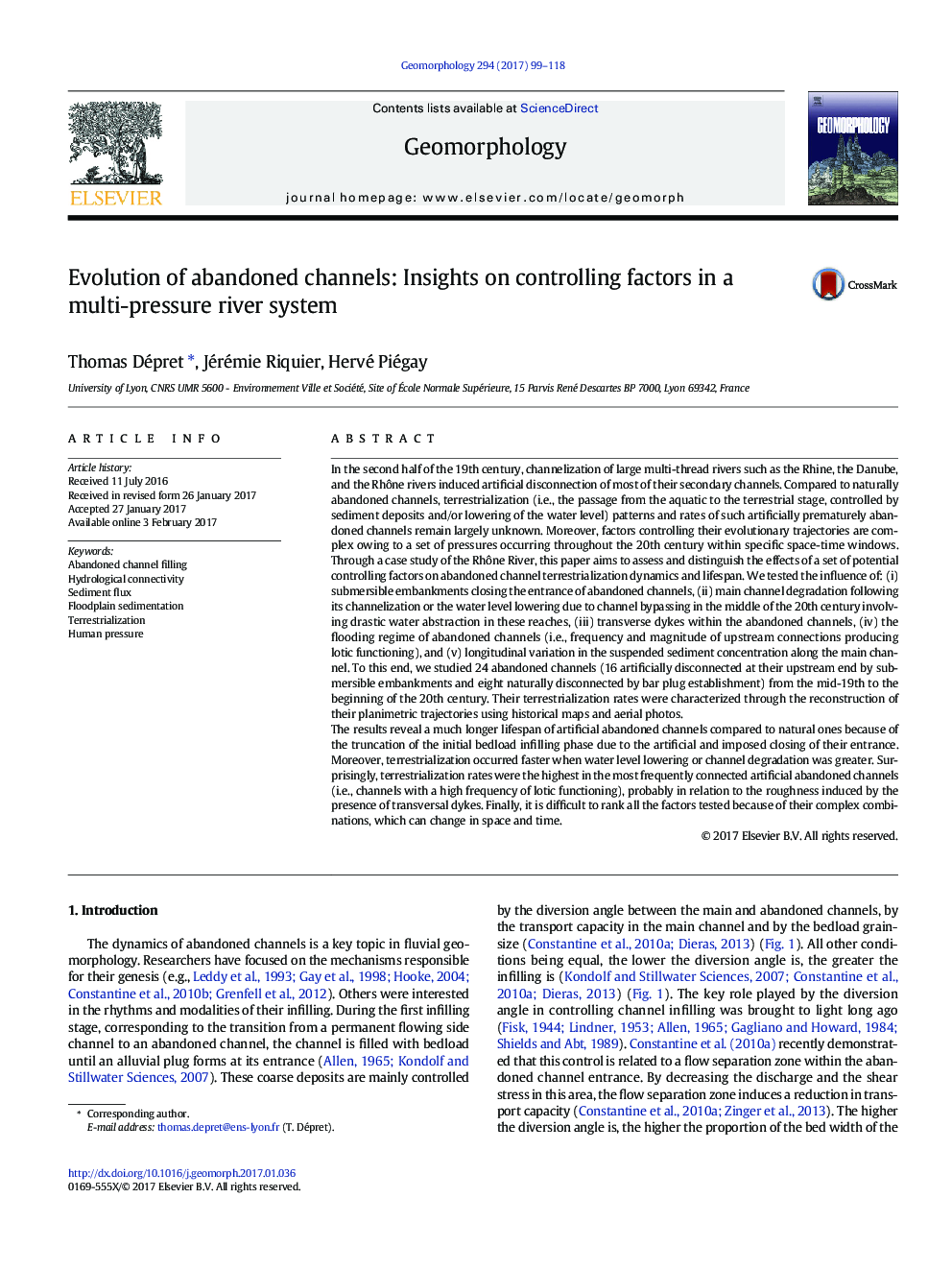| کد مقاله | کد نشریه | سال انتشار | مقاله انگلیسی | نسخه تمام متن |
|---|---|---|---|---|
| 5780713 | 1635356 | 2017 | 20 صفحه PDF | دانلود رایگان |
- Artificial abandoned channels lifespan is longer than natural ones.
- Longer lifespan of artificial abandoned channels due to bedload infilling truncation.
- Abandoned channels terrestrialization exacerbated by water level lowering.
- Abandoned channels terrestrialization increases with upstream connectivity.
- Complex combinations of control factors that can change in space and time.
In the second half of the 19th century, channelization of large multi-thread rivers such as the Rhine, the Danube, and the Rhône rivers induced artificial disconnection of most of their secondary channels. Compared to naturally abandoned channels, terrestrialization (i.e., the passage from the aquatic to the terrestrial stage, controlled by sediment deposits and/or lowering of the water level) patterns and rates of such artificially prematurely abandoned channels remain largely unknown. Moreover, factors controlling their evolutionary trajectories are complex owing to a set of pressures occurring throughout the 20th century within specific space-time windows. Through a case study of the Rhône River, this paper aims to assess and distinguish the effects of a set of potential controlling factors on abandoned channel terrestrialization dynamics and lifespan. We tested the influence of: (i) submersible embankments closing the entrance of abandoned channels, (ii) main channel degradation following its channelization or the water level lowering due to channel bypassing in the middle of the 20th century involving drastic water abstraction in these reaches, (iii) transverse dykes within the abandoned channels, (iv) the flooding regime of abandoned channels (i.e., frequency and magnitude of upstream connections producing lotic functioning), and (v) longitudinal variation in the suspended sediment concentration along the main channel. To this end, we studied 24 abandoned channels (16 artificially disconnected at their upstream end by submersible embankments and eight naturally disconnected by bar plug establishment) from the mid-19th to the beginning of the 20th century. Their terrestrialization rates were characterized through the reconstruction of their planimetric trajectories using historical maps and aerial photos.The results reveal a much longer lifespan of artificial abandoned channels compared to natural ones because of the truncation of the initial bedload infilling phase due to the artificial and imposed closing of their entrance. Moreover, terrestrialization occurred faster when water level lowering or channel degradation was greater. Surprisingly, terrestrialization rates were the highest in the most frequently connected artificial abandoned channels (i.e., channels with a high frequency of lotic functioning), probably in relation to the roughness induced by the presence of transversal dykes. Finally, it is difficult to rank all the factors tested because of their complex combinations, which can change in space and time.
Journal: Geomorphology - Volume 294, 1 October 2017, Pages 99-118
